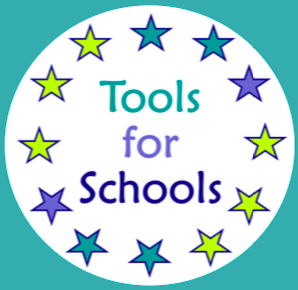Plan
- Understanding this will help you plan to avoid certain situations or scenarios that will cause impulsive behaviour
- This is important because students are not able to control these behaviours and we cannot always make them change, so we need to flex around the situations that start them
- Watch the understanding environmental triggers video
- You will need to set aside some time to work with the student to complete the activity, which involves them making a personal map of the school, with trigger points marked on the map. It can be done as a class activity, however other students in the class may identify other ‘trigger areas’ that may not necessarily be relevant for the toolkit student
- Make a rough sketch of the layout of the school and of the classroom for the student to work from with you (the map)
Do
- Explain to the student that you understand that some things make them upset or agitated, and you want to know what those things are, in the classroom and around the school
- Explain that to do this you will work together to create a treasure map (using the map activity template) with their danger zones, no-go areas or ‘floor is lava’/’shark pit’ areas
- Talk through or walk around the school and classroom with the student, asking them to point out the danger zones for you to put on their map. You could use the ‘hot/cold’ game to make it more fun and have the child focus on directing you to figure out what their’ ‘hot’ objects or areas are. They could point at or put stickers on things
- Remember they might not know or be able to verbalise what their danger zones are, so pay close attention to their non-verbal behaviour. Look for swaying movements, sporadic eye contact, eyes going up and into the far corner of the eye, fidgeting with hands/fingernails, chewing of nails/cuticles, rapid talking, fast breathing.
- Identify what aspect is negative for the student: is it about sounds or space (too many other students moving through the space at one time?), is it about the smell, or the person who is there? This will help you to understand how best to flex around the trigger point
- Do the map activity at two times of day to capture when areas of the school are busier or quieter if need be (trigger points might not be present all the time)
Review
- Make a plan for how to manage each trigger point - is it something you and they can avoid, is it something they can tolerate for a very short time, or is it unavoidable and intolerable? Use the template for how to flex around trigger points
- Where you can make changes to support the student to flex around the triggers, make these changes (e.g. changing a noticeboard, moving things that flap in the wind when the window is open, using a different route to take the class from one area of the school to another) and explain what you have changed to the child so they see that their concerns are important
- For the ones where it is not obvious what you can do, or the trigger is intolerable, talk to the child’s family about how they manage this at home. Discuss with colleagues or senior leadership. Try and be creative to support the school environment being a more inclusive place for them, rather than forcing the child to change
- For the least discomforting trigger points (from the child’s perspective), make a plan where the student will be very slowly exposed to them on more occasions in a positive manner - over time this should reduce their anxiety (exposure and habituation). Use the planning template
- This should ALWAYS be immediately followed by positive praise and reinforcement for trying, whether or not they are successful. Refer back to the environmental triggers video for some detailed tips
- This exposure should always be under the child’s control: give them choices and options, e.g. “I would like you to try this after lunchtime” “No? OK, how about we try it tomorrow?” If the child does not feel in control or this could make their triggers worse
For example, if there is another teacher that the student struggles to be close to, consider how you can have that teacher drop by and have very small but positive interactions with the student. Use the Know Me activity to help with this: if the student is interested in animals perhaps the staff member could stop by the class to show a picture of their pets to you (the teacher), and you can invite the student to come and share the experience and see the picture
If the child shows distress, it is important to stop the exposure, praise them for trying and allow them to remove themselves from the situation. When the child has calmed down, allow the child to talk it through (where time/ resources allow) and make a plan for what to try next/ how to make trying again easier for the child
- This strategy requires allowing the child to choose to avoid things that cause distress, and gradually building exposure to some things where possible
- Take time to better understand whether the student may be able to learn to accommodate some things, and where they do not need to learn this, use the reflection template to record
- This will tie in with how essential or prominent the trigger may be in the rest of their school life or home life - if it is something unique and non-critical to your school environment, the student could be flexed around and allowed to avoid it. If it is something they will come across many times, very slowly increasing their exposure to it over weeks and months may be beneficial
- Review the map and trigger points with your SENCo and the students’ family to see if they have any suggestions or ideas that you can try



